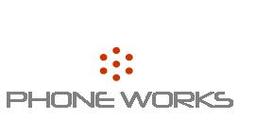It’s the end of the month and if you reconcile inventory monthly, that means inventory time. WorkingPoint helps you manage your inventory from purchase to  sale. And we help you reconcile your inventory so your records are up to date. This is important so you can feel confident that your available quantities in WorkingPoint are true so you don’t overpromise or undersell products to your customers, so your inventory valuations (what your records say the value of your products is) is accurate and so you can see what you are running low on and plan reorders with your vendors.
sale. And we help you reconcile your inventory so your records are up to date. This is important so you can feel confident that your available quantities in WorkingPoint are true so you don’t overpromise or undersell products to your customers, so your inventory valuations (what your records say the value of your products is) is accurate and so you can see what you are running low on and plan reorders with your vendors.
If you’re a products-based business and you keep products on-hand to sell, then you know that for various reasons, your actual inventory quantities can easily get out of sync with the quantities stored in your inventory management system. This could happen through spoilage, breakage, theft, or data entry errors.
Scheduling regular physical inventories of your products lets you compare your books to what you actually have on the shelf so you can make adjustments to your inventory system so the quantities stored there match your actual quantities. Most business determine the frequency based on their volume and how closely they want to keep an eye on overages and shortages; some choose a monthly schedule, others quarterly and even some yearly.
If you are new to taking inventory or you’re just new to WorkingPoint, here are some easy steps to taking your next physical inventory:
Inventory Prepwork
Paperwork
Before you perform an inventory, be sure that all of your business activities to date have been recorded in WorkingPoint. That means record all expenses, record all sales, record all bills – anything that you affects your inventory, be sure it is recorded in WorkingPoint. This way, WorkingPoint can adjust the cost and available quantities for you so that you can be confident that everything is accounted for and that your adjustments will be valid.
Products
Take some time to consolidate and organize your products. Inventory time is a great time to do a little housekeeping. Straighten products on shelves or in warehouses. Combine like products in split cases into one. If your products are in multiple places, try to move them so that the same products are stored together. If you have pulled sample products, return them to their regular storage place so they can be counted together not onesey, twosey.
Property
If you have a large facility or several locations where you store inventory, create a map of your property, section off areas and assign them names or letters so you can track what has been counted and where. Some people even cut letter-sized colored paper into 8-1/2 x 5-1/2 sheets and then place them at the beginning and end of shelves and intial them when they complete a section so other people know that shelf has already been counted.
Print out your WorkingPoint Stock Status Report
Go to your Items List and under View choose Inventory Items and Sort by Name. This list will show all of the items you track inventory for and will include the count that WorkingPoint says you have on available (more on why that is important later).
Distribute the Lists & Assign Counters to Specific Areas
Make as many copies are you have people counting and attach the lists to a clipboard and include a pen. Assign counters to specific areas, and record who you assigned where on your property map. Ask them to come back and turn in their list when they have finished counting a section and you can reassign them to another location if necessary.
Count Your Products
Physically count each unit of your products and write down the actual quantity next to the product on the list. Some folks use tally marks and that works if you have only a few items of each. If you have more than a few, record the whole number, like “26.” If you have cases of stuff be sure to track the number of cases separately than the number of single units so you don’t mistake 26 each for 26 cases or vice versa.
Collect Lists & Calculate Totals
Once you are finished counting all of your products, collect all of the lists and total up the counts per item. Then total up the counts for all like item across all of the lists on a single master list.
Research Discrepancies
Identify any product where the actual quantity differs from your list. Double-check the totals on each sheet and check your math for the total of all sheets. If there is still a discrepancy, send out your counter to recount those items. And double-check all purchases and sales to make sure that all invoices and bills and credit have been accounted for.
Make Final Adjustments
Make the adjustments in WorkingPoint by increasing or decreasing the available quantity so your books match your shelves.
To increase the quantity in WorkingPoint to Match Your Actual Physical Quantity
To decrease the quantity in WorkingPoint to Match Your Actual Physical Quantity

 A full service telephone and computer network systems installation and service company for South Florida.
A full service telephone and computer network systems installation and service company for South Florida.




